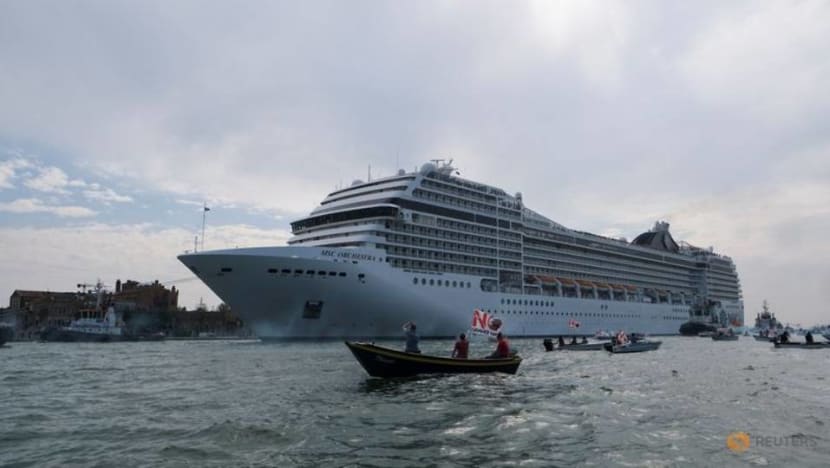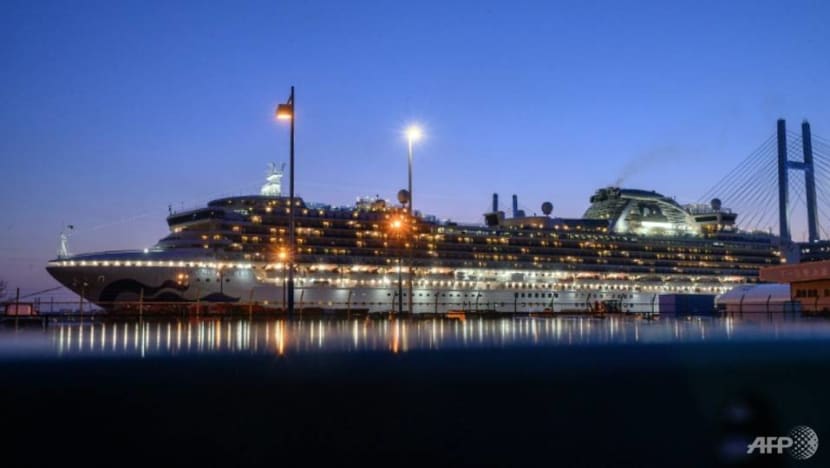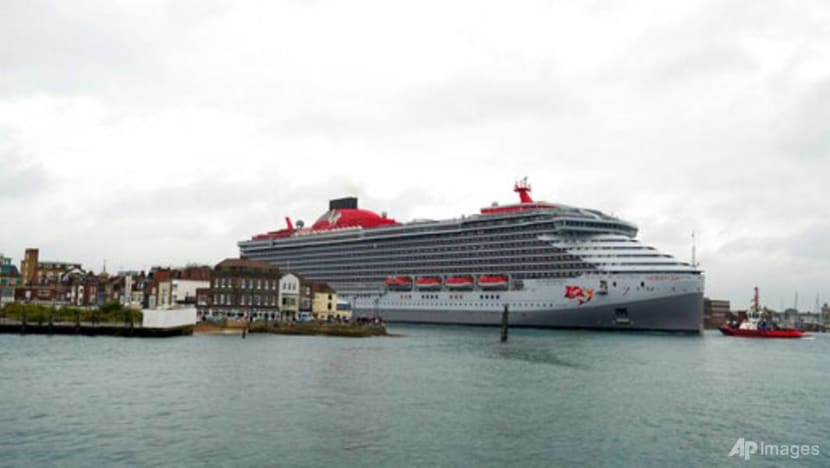Commentary: Cruise workers in limbo as many ships left adrift with little hope of resuming sailing
Cruise ship crew and hospitality staff are international labour migrants driven by hopes of a better life. COVID-19 has revealed the precarity of their employment, says the Australian National University’s Kathryn Robinson.

The first cruise ship of the summer season departs from Venice. (Photo Reuters)
SYDNEY: The early focus during the COVID-19 outbreak on cruise ships as “petri dishes” of infection has been eclipsed by the enormous economic and health impacts of the pandemic.
But early outbreaks on mega cruise ships presaged the global dimensions of the outbreak. The Diamond Princess was quarantined in Yokohama in February 2020 as over 700 of its 3700 passengers were infected and over a dozen died.
Subsequently, its sister ship, the Ruby Princess controversially disembarked 2,700 passengers in Sydney in March 2020, seemingly the result of failures in Australia’s quarantine procedures.
It infamously resulted in 660 cases and 21 deaths in Australia, including seeding an outbreak in northern Tasmania.
READ: World Dream cancels Jul 14 cruise after suspected COVID-19 case detected on earlier voyage
THE PRE-PANDEMIC GROWTH OF PLEASURE CRUISING
The mass pleasure cruising industry is a relatively recent global economic phenomenon. Based on mega ships that carry thousands of passengers and staff, it was made possible by the globally interconnected economy that developed in the late 20th century.
Mass cruising is dominated by three large companies: Carnival, Royal Caribbean and Star Cruises. Carnival is the largest, with 100 vessels operating under 10 brands, one of which operates the Diamond Princess and Ruby Princess.
These mass corporations benefit from the “leased sovereignty” of registering their ships in so-called “flag of convenience” (FoC) states. The most often used are Panama and the Bahamas where they face minimal regulations on taxes, wages and labour conditions.
READ: Commentary: COVID-19 outbreak has become an existential crisis for the cruise industry
PROBLEMS OF REPATRIATING CRUISE WORKERS
Cruise ship crew and hospitality staff are, like merchant seamen, international labour migrants driven by hopes of bettering their futures for their families. The COVID-19 pandemic revealed the precarity of their employment.
COVID-19 exposed weaknesses in the FoC business model. The large ships were caught at sea, unable to sail to safe-haven ports even after they obtained permission to disembark passengers.
The FoC countries do not have ports able to accommodate these huge ships. The ships have been effectively “orphaned”, sharing limited anchorages and occasional visits to ports at non-FoC locations across the world.

Passengers on the Ruby Princess disembarked in Sydney and returned to their homes in Australia and overseas — but what about the multinational crew?
The Australian government did not permit them to disembark, and the cruise company required at least some to remain on board to maintain the ship. Even without passengers, these floating hotels need 100 or more crew to keep them functioning.
There were problems in repatriating crews to their homelands as borders closed and air travel dried up. The Ruby Princess crew were also stigmatised by their association with the virus and many of those remaining on board were infected.
READ: Commentary: Cruise workers would rather be onboard ships in a pandemic than home
CARING FOR SEAFARERS
The Ruby Princess was eventually relocated from Circular Quay in Sydney to the Grain Terminal at industrial Port Kembla in Wollongong. The union consciousness of the region resulted in an assistance project led by Reverend John Kewa of the Mission to Seafarers, joined by the trade unions and local government.
Volunteers packed 1,200 care packages comprising food, gifts and phone cards for the workers left on board “to protect the dignity and welfare of the seafarers”.
The ship eventually sailed from Port Kembla in April 2020, accompanied by tugs displaying water cannon salutes, the symbol of recognition of heroic seafarers.
It went to an offshore mooring in the Philippines, joining a number of other ships stranded in this part of the world. Singapore and Johor also became hosts for ships that were moored offshore with minimum crews needed to maintain them.
COVID-19 LIMBO
So what is the future of this industry that has been a valued source of employment for many migrant workers? In September 2020, 300,000 crew were reportedly still stuck in “COVID-19 limbo” on ships, unable to return home.
These numbers included cruise ship crew and merchant seaman. Many faced long waits and long journeys home without pay. The problem remains unresolved.

Cruise companies appear hopeful about that they will be able to resume sailing and some smaller ships already began sailing with hyperlocal itineraries within national borders towards the end of 2020. Some of the older, larger ships have been scrapped.
Carnival and Renaissance submitted a set of operating proposals to the US Centers for Disease Control (CDC) for approval to sail again. The CDC has been reluctant to give approval for the large ships to sail again in US waters, but some sailing in US and Caribbean waters resumed in June.
While cruise companies report that they have plenty of advance bookings from prospective passengers in the United States, Australia and Europe, infection rates remain high in many of the source countries for maritime and hospitality workers, and vaccine rollouts are slow.
Prospective workers face border closures and diminished transport links in reaching ports of embarkation.
The question remains whether the cruise industry can be a source of work for migrant workers from the global south under new proposed conditions of employment, such as requirements for vaccination.
Great effort will be needed to ensure that conditions are improved through compliance with new health and safety requirements and fair wages.
Kathryn Robinson is Emeritus Professor at the School of Culture, History and Language, The Australian National University. This commentary first appeared in East Asia Forum.










